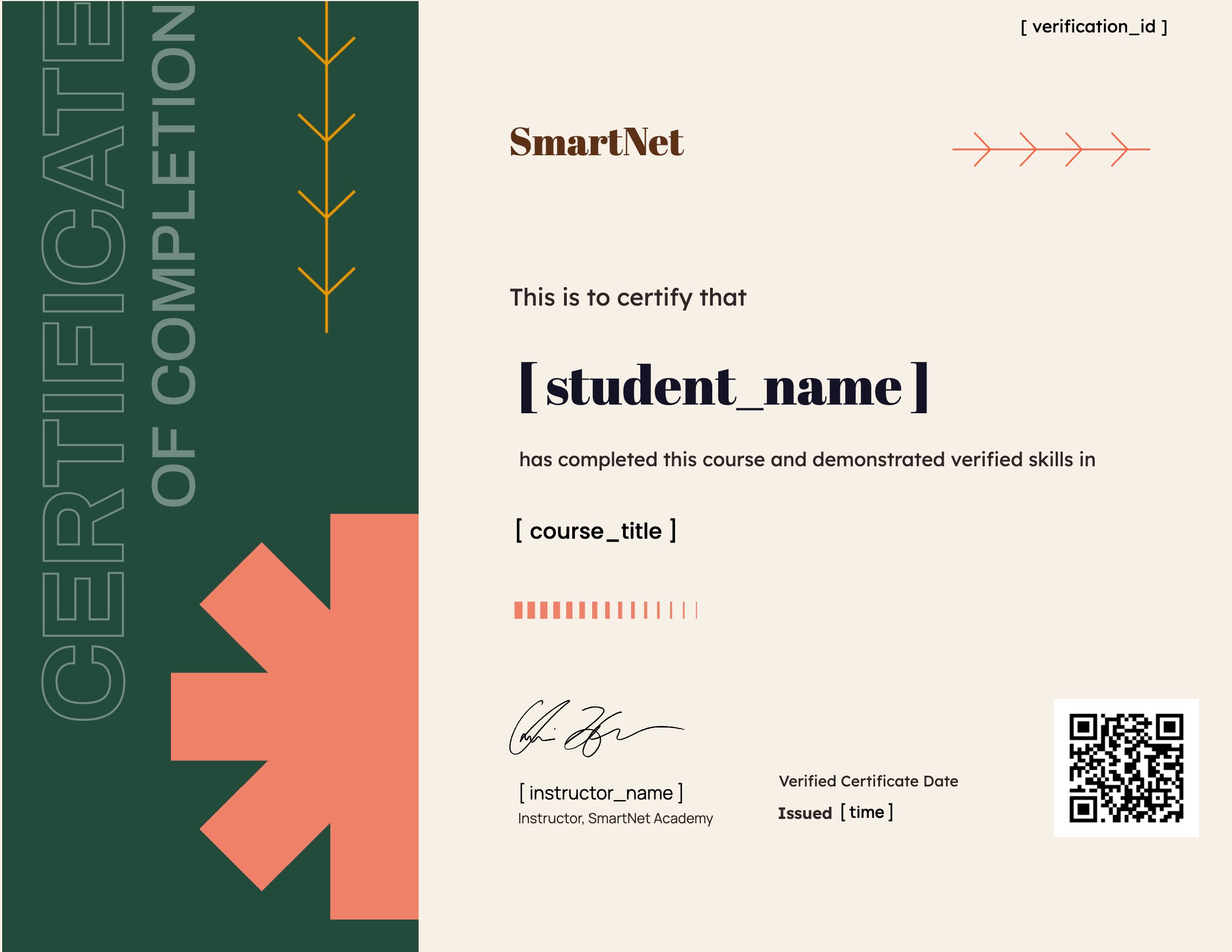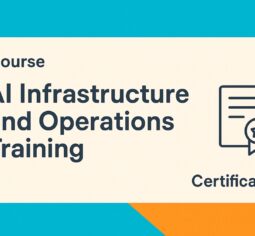Embark on a transformative journey with the course AI in Space: Transforming Exploration with Intelligent Systems, a course that demonstrates how intelligent automation and advanced computational techniques lead next-generation space missions. SmartNet Academy presents this complete training program which highlights the impact of intelligent systems and data science on current space exploration programs that range from launching satellites to developing interplanetary robots.
The increasing capability of intelligent algorithms makes their participation in space technology applications increasingly essential. Space exploration strategies are evolving thanks to new technologies that manage spacecraft autonomy and mission route optimization while processing large cosmic data sets. The course combines real-world applications with simulations and expert instruction to prepare students for involvement in intelligent aerospace systems of the future.
Why Intelligent Automation Matters in Space Exploration
Intelligent automation serves as a fundamental component in modern space exploration because it allows spacecraft systems to work autonomously and independently over large distances. The development of self-reliant technologies becomes crucial as space missions extend farther from Earth which results in delayed response times.
Operating Beyond Human Reach
Spacecraft operating light-years away cannot rely on real-time commands from Earth. Intelligent automation bridges this gap by empowering machines to:
-
Make split-second decisions based on sensor data
-
Adapt to changing environmental and mission conditions
-
Operate during communication blackouts or data delays
-
Prioritize objectives based on real-time inputs and mission goals
These capabilities ensure that missions continue smoothly, even in the face of unpredictable cosmic phenomena.
The Role of Learning Systems in Space
Machine learning and neural networks form the backbone of modern space systems. This course explores how these systems:
-
Learn from past mission data to enhance future performance
-
Recognize patterns in satellite imagery and terrain maps
-
Predict system failures before they occur
-
Assist in trajectory correction and collision avoidance
By simulating human-like reasoning, these systems reduce dependence on Earth-bound teams and increase mission efficiency.
Enhancing Mission Resilience and Adaptability
Uncertainty is a constant in space environments. Intelligent automation supports fault-tolerance and adaptability by:
-
Detecting and correcting onboard anomalies in real time
-
Switching between backup systems autonomously
-
Rerouting exploration paths when encountering obstacles or hazards
These features are especially crucial for deep-space probes, Mars rovers, and autonomous orbiters.
A Foundation for Future Exploration
The course lays the groundwork for understanding automated reasoning systems which protect missions and research while advancing interstellar travel capabilities. Participants develop practical skills to build systems that respond and adapt to unknown conditions through sequential decision-making processes.
Intelligent automation provides the foundation for a space exploration future that becomes possible and deeply intelligent. The principles discussed enable a comprehension of how automated reasoning systems contribute to both mission safety and scientific exploration in space.
Real-World Use Cases in Aerospace Innovation
The application of intelligent technologies to aerospace operations has changed the limits of achievable space mission objectives. The course provides learners with detailed case studies that demonstrate how organizations such as NASA, ESA and private aerospace firms utilize intelligent systems to advance performance while enhancing safety and expanding exploration potential.
Rover Mobility Systems: Intelligent Terrain Navigation on Mars
Autonomous mobility is key to robotic space exploration. AI enables Mars rovers to:
-
Analyze terrain data using onboard computer vision
-
Detect and avoid obstacles in real time
-
Map efficient paths across unstructured Martian surfaces
-
Make autonomous decisions during signal delays from Earth
These capabilities reduce reliance on ground control, enabling rovers like Perseverance to conduct extended missions with increased scientific output.
Satellite Analytics: Turning Orbital Data into Actionable Insights
AI models are instrumental in interpreting vast streams of satellite imagery. These systems:
-
Use pattern recognition to track environmental changes on Earth
-
Detect anomalies in planetary surfaces
-
Monitor ice sheet movements, deforestation, and urban expansion
-
Support disaster response through automated image analysis
Organizations like the European Space Agency rely on these tools to process terabytes of imagery with speed and precision.
Exploration Probes: Autonomous Scientific Investigations
Deep-space probes often operate millions of kilometers from Earth. Intelligent systems allow them to:
-
Perform scientific experiments without human intervention
-
Select observation targets based on predefined learning criteria
-
Transmit only relevant findings back to Earth, conserving bandwidth
-
Optimize sensor use based on mission priorities
These innovations have made missions like Voyager and New Horizons remarkably efficient and scientifically productive.
Smart Telescopes: Enhancing Our View of the Cosmos
Modern telescopes benefit greatly from automation and intelligent calibration. These systems:
-
Identify galaxies, exoplanets, and star formations using deep learning
-
Filter out noise to enhance image clarity
-
Prioritize celestial objects based on mission objectives
-
Automate telescope pointing and tracking in real time
As a result, observatories can process more observations with greater accuracy and minimal manual oversight.
Space Traffic Management: Securing a Safe Orbit
With the rise in satellite constellations, managing orbital traffic is critical. AI-driven space traffic systems:
-
Track thousands of objects in real time
-
Predict collision risks and suggest maneuvers
-
Monitor debris paths and issue early warnings
-
Support international coordination and response protocols
These tools protect valuable space infrastructure and reduce the risk of catastrophic impacts.
Bridging Theory and Reality
By studying these real-world examples, learners not only understand how smart technologies operate but also grasp their impact on mission success. Each case study links directly to the technical concepts covered in the course and shows how intelligent systems are revolutionizing space exploration, one innovation at a time.
Hands-On Tools for Space-Focused AI Projects
One of the most distinctive features of the course AI in Space: Transforming Exploration with Intelligent Systems is its practical orientation. Beyond theoretical frameworks, this course immerses learners in hands-on experiences that replicate real-world tasks in space-focused AI development. From coding intelligent algorithms to simulating rover movements, students gain a working knowledge of the platforms and programming environments used by aerospace professionals today.
Programming and Machine Learning Foundations
At the core of this course is the use of Python, the preferred programming language in AI and space technology sectors. Learners will:
-
Build and train models using TensorFlow, Scikit-learn, and PyTorch
-
Develop regression and classification models for satellite data
-
Automate workflows that mirror mission-critical operations
-
Deploy intelligent systems that analyze telemetry, images, and signals
This module ensures students become comfortable building scalable, AI-powered models that support exploration goals.
Simulation Environments for Autonomous Systems
Understanding how AI systems operate in a physical environment is essential. Students will use:
-
Gazebo for 3D simulation of planetary rovers and robotic arms
-
MATLAB for modeling flight paths, signal processing, and algorithm testing
-
ROS (Robot Operating System) to integrate hardware behavior and software logic
These tools allow learners to simulate autonomous decision-making and mobility functions in space-like conditions.
Data Visualization and Analytical Tools
Visualizing and interpreting space data is crucial for identifying trends, anomalies, and mission-critical patterns. Learners will apply:
-
OpenCV for computer vision applications such as terrain recognition
-
Plotly for creating interactive visualizations of time-series and geospatial data
-
Pandas for efficient manipulation and analysis of tabular datasets
By working with actual data collected from satellites and rovers, students enhance their ability to communicate technical insights to both engineers and mission stakeholders.
Real-World Data APIs and Satellite Sources
To make their projects more realistic, students will connect with open and proprietary space datasets via APIs such as:
-
NASA’s Open API Platform for satellite telemetry and mission archives
-
ESA’s Copernicus Open Access Hub for Earth observation data
-
Commercial APIs like Planet Labs for high-resolution daily imaging
This exposure prepares learners to build AI systems using the same data sources trusted by international space agencies and space-tech firms.
Building Competency Through Practice
Each hands-on module is paired with exercises that challenge learners to solve space-relevant problems—from detecting craters on Mars to simulating an orbital maneuver. The course structure ensures that students are not just observers of innovation but active participants in it, developing skills they can apply immediately in research, industry, or further academic pursuits.
Forward-Thinking Topics in the Future of Intelligent Space Systems
As artificial intelligence and aerospace engineering evolve at unprecedented speeds, future missions demand more than conventional approaches—they require bold innovation. This course integrates forward-thinking topics that explore the cutting edge of intelligent space systems. Learners are encouraged to think beyond current limitations and envision how intelligent technologies will enable long-duration missions, support human presence on other planets, and facilitate autonomous scientific discovery.
Autonomous Crew Support: Empowering Human Spaceflight
Long-duration missions, such as those to Mars or lunar bases, require systems that can operate without constant human oversight or contact with mission control. Students will examine how AI contributes to:
-
Real-time diagnostic systems for spacecraft and habitat equipment
-
AI-powered assistants that provide astronauts with step-by-step procedural support
-
Mental health monitoring and adaptive workload balancing
-
Emergency response protocols supported by predictive algorithms
These systems are designed to enhance safety, efficiency, and the psychological well-being of crews operating in deep space.
Edge Computing in Spacecraft: Smarter Systems at the Source
Traditional data pipelines rely heavily on ground-based servers for processing. With edge computing, spacecraft gain the ability to:
-
Process mission-critical data locally, minimizing communication delays
-
Conduct onboard analytics for navigation, system health, and anomaly detection
-
Operate independently in high-latency or disconnected environments
-
Reduce reliance on bandwidth-intensive downlinking of raw data
This localized approach is especially valuable for interplanetary missions and real-time rover operations on distant celestial bodies.
Distributed Intelligence: Swarms and Collaborative Autonomy
Distributed AI systems are redefining how we think about mission architecture. Learners will explore:
-
Swarm robotics for asteroid exploration and surface mapping
-
Satellite constellations that share data and optimize orbits cooperatively
-
Multi-agent learning systems that divide tasks for efficiency and coverage
-
Sensor networks capable of monitoring planetary environments autonomously
These distributed systems offer scalability, redundancy, and adaptability in complex mission environments.
Quantum-Assisted Computation: A New Frontier for Space Data
Quantum computing holds immense potential for solving complex space challenges. This module introduces:
-
Quantum algorithms for high-speed space data compression and decryption
-
Applications in space weather modeling and gravitational wave analysis
-
AI-quantum hybrid models for optimizing mission trajectories and fuel usage
-
Future use cases in deep-space communication and navigation
These forward-looking insights provide students with a strategic understanding of emerging capabilities that could revolutionize interstellar research and spacecraft design.
From Vision to Implementation
Each of these topics is not just theory—they are areas of active research and experimentation. Through discussions, concept design exercises, and optional research activities, learners will engage with the very innovations that are expected to define space exploration in the coming decades. This future-facing mindset equips students to become the thinkers, creators, and leaders shaping the next chapter in humanity’s journey beyond Earth.
Cross-Disciplinary Learning for Expansive Careers
This course emphasizes the synergy between software engineering, machine learning, and space science. It’s designed for learners from diverse fields who are ready to specialize at the convergence of automation and aerospace systems.
Roles this course prepares you for:
-
Intelligent Systems Engineer (Aerospace)
-
Space Data Analyst
-
Robotics Integration Specialist
-
Space Mission AI Architect
-
Planetary Science Researcher with ML Focus
With these capabilities, you’ll stand out in organizations that lead the world in advanced space research and engineering.
Why Choose SmartNet Academy to Study Intelligent Space Systems?
SmartNet Academy provides a curated learning experience tailored to today’s technological landscape. Our educators come from both the academic and applied sectors, offering a curriculum rich in relevance and rigor.
You’ll benefit from:
-
Flexible self-paced modules with practical labs
-
Real datasets and simulation scenarios
-
Mentorship and peer engagement opportunities
-
Portfolio-based assessments and project feedback
-
A capstone project designing your own smart space solution
Whether your goal is industry entry, career transition, or future research, this course equips you to move forward with confidence.
Final Project: Design a Smart System for Space Exploration
The program concludes with a project where you create and present your own innovative space system. Example outcomes include:
-
An autonomous surface vehicle for lunar terrain
-
An ML model predicting radiation patterns
-
A satellite data classifier for storm detection
-
A tool for identifying exoplanetary conditions
This final showcase demonstrates your readiness to work on AI-infused aerospace projects and solve real-world problems.
Summary: Launch a Career at the Intersection of Space and Intelligence
AI in Space: Transforming Exploration with Intelligent Systems is a course designed for visionaries, developers, and problem-solvers who want to be part of the space-tech movement. With a blend of intelligent computing and aerospace application, this program empowers you to build the systems that will drive tomorrow’s missions.
Start your journey today with SmartNet Academy and explore how data, learning, and automation are reshaping humanity’s path through the stars.

































